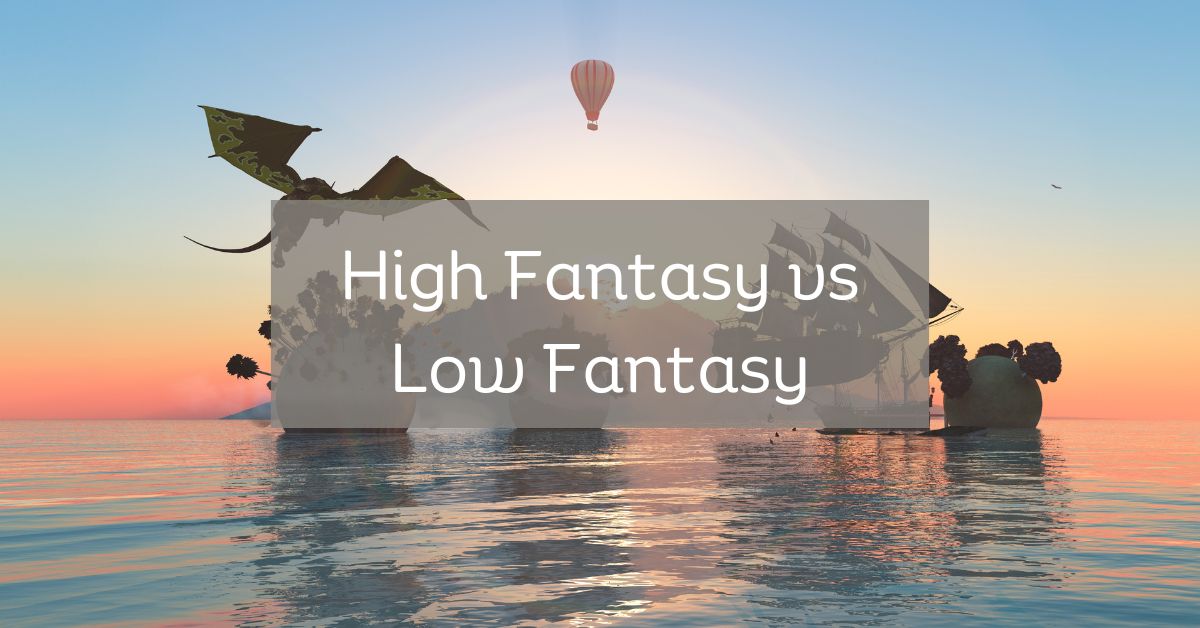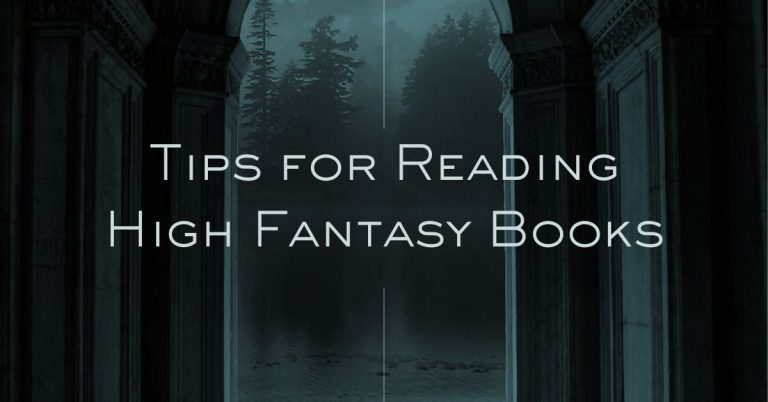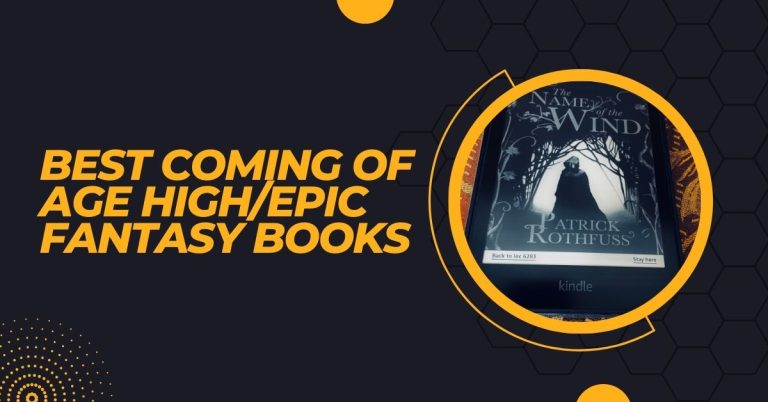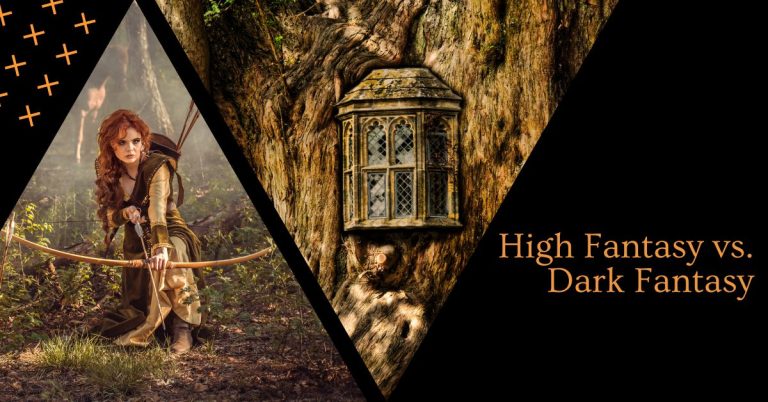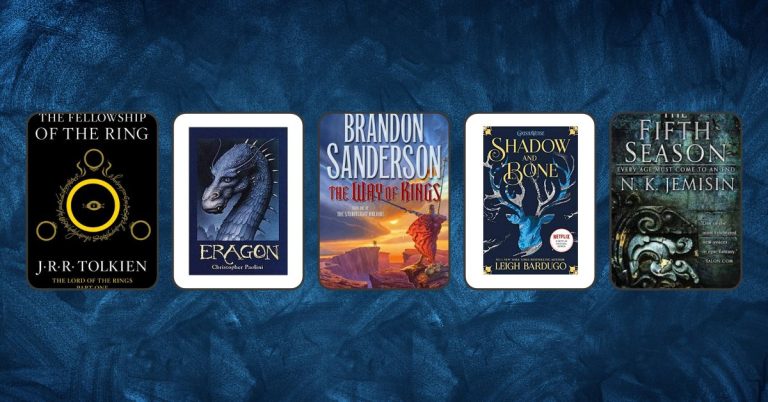High Fantasy vs. Low Fantasy: A Complete Explanation Guide
If you are a fan of the fantasy genre, then you must already know what is a high fantasy and a low fantasy genre. If you are a beginner, this article is going to help you learn the key differences between high fantasy and low fantasy genres.
High fantasy is a type of fantasy literature that is also known as epic fantasy. It is distinguished by a self-contained fictitious universe with its own set of rules and physical laws that differ from our known reality. This universe typically has its own history, civilizations, languages, and intricate social and political structures.
Another subgenre of fantasy literature is low fantasy.
Unlike high fantasy, low fantasy is frequently set in the real world or a setting quite similar to it but with magical or fanciful aspects added. This fusion of the familiar and the fantastical provides a distinct contrast that can add depth and excitement to the story.
So, what is a high fantasy, or how the plot goes?
How is the high fantasy different than the low fantasy?
High fantasy stories are frequently centered on big themes, such as the conflict between good and evil, with well-defined heroes and villains. Plots can be intricate, with enormous casts of characters and several interrelated narratives. Magic, mythological creatures, and sophisticated world-building are common components in high fantasy.
The fate of the planet is frequently at stake, and the narrative may include quests, battles, and triumph over immense obstacles. Some of the most well-known examples of high fantasy include J.R.R. Tolkien’s The Lord of the Rings trilogy, George R.R. Martin’s A Song of Ice and Fire series, and Robert Jordan’s The Wheel of Time series.
On the other hand, Low fantasy’s magical or fantastical elements are frequently subtle, mysterious, or unexplained, as opposed to being a widely accepted part of the world’s workings as in high fantasy. These stories are frequently more limited in scope than high fantasy tales, focusing on personal or local difficulties rather than world-changing crises.
Low fantasy characters are typically more ethically ambiguous than the clear-cut heroes and villains depicted in high fantasy. When paired with more recognized surroundings, low fantasy storytelling can become more character-driven, focusing on characters’ inner challenges and growth.
Low fantasy works include The Chronicles of Narnia by C.S. Lewis, in which a group of children discovers a magical world by passing through a wardrobe, and J.K. Rowling’s Harry Potter series, in which a parallel magical society exists alongside the regular world, unbeknownst to most people.
Another example is George R.R. Martin’s A Song of Ice and Fire trilogy, which has elements of high fantasy but is noted for its grounded characters, political intrigue, and moral depth.
What is the difference between fantasy and high fantasy?
All high fantasy books are based on fantasy plots and fall in the genre, but not all fantasy books are categorized as high fantasy. Certainly, there are some fundamental differences between the general genre of fantasy and the more particular subgenre of high fantasy.
Environment: In general, fantasy stories can take place in any environment, from the real world to wholly imagined realms. High fantasy, on the other hand, is distinguished by its setting in an altogether unique planet or cosmos from our own.
Scale: Fantasy stories can take on any size, from personal and intimate tales to huge epics. High fantasy typically includes large, epic storylines with exceedingly high stakes, frequently involving the fate of the entire world or universe.
Magic and Supernatural aspects: Both fantasy and high fantasy contain magical and supernatural aspects, although their presentation varies. In fantasy, these characteristics can be subtle, cryptic, or even a source of contention within the fictional universe. Magic is often a well-established component of the universe in high fantasy, with its own set of rules and institutions, and mythical beings are commonplace.
Characters and subjects: Fantasy stories can have a wide variety of characters and subjects. High fantasy, on the other hand, frequently involves a clear-cut conflict between good and evil, with well-defined heroes and antagonists. The themes frequently incorporate noble journeys, personal sacrifice, and the struggle for power.
Given the flexibility and complexity of the fantasy genre, individual works of fantasy and high fantasy may not precisely correspond with all of these elements.
What is high fantasy in books?
High fantasy is a subgenre of fantasy literature distinguished by a fully independent, self-contained fictitious world or universe, distinct from our own reality, with its own rules, history, and cultures. High fantasy settings are frequently elaborate and detailed, reflecting the author’s great world-building skills.
High fantasy stories sometimes revolve around epic storylines or adventures featuring a fight between good and evil. In these battles, the fate of the fictitious world is frequently at stake, and the characters must often overcome enormous hurdles or embark on heroic adventures to save their world.
Magic, mythological beings, and supernatural phenomena are common elements in high fantasy. These aspects are widely accepted and assimilated into the fictional world’s civilization. There is frequently a magical system with its own set of rules and constraints, and mythical animals have their own cultures and communities.
A wide cast of people is common in high fantasy, ranging from noble heroes and powerful wizards to terrible villains and monstrous beasts. These characters may be involved in intricate plotlines that span numerous novels or perhaps an entire series.
J.R.R. Tolkien’s The Lord of the Rings series, Robert Jordan’s The Wheel of Time series, and George R.R. Martin’s A Song of Ice and Fire series (commonly known as the Game of Thrones series, after the title of the first book and the TV adaptation) are all instances of high fantasy.
Differences between low fantasy and urban fantasy:
Both low fantasy and urban fantasy are subgenres of fantasy literature with distinct characteristics:
Low Fantasy
As previously said, low fantasy is frequently situated in a genuine or realistic environment but has elements of magic or the supernatural. Fantastical components are usually subtle or mysterious, and they are frequently a cause of conflict or tension in the story.
Rather than world-changing threats, the narrative mainly concentrates on personal or local difficulties. Low fantasy characters might be morally ambiguous, and the stories frequently emphasize their personal difficulties and progress.
Urban Fantasy
An urban fantasy is a sort of low fantasy that takes place in a city, usually in the present or recent past. This subgenre combines ordinary features of modern city life with fantastic components. The city itself is an important aspect of urban fantasy stories, influencing the plot and the interactions of the characters.
These stories may have magical underworlds hidden within cities, supernatural entities living among people, or other forms of magic and fantasy intermingled with city life.
It’s worth noting that urban fantasy is also a type of contemporary fantasy, which incorporates fantasy elements into a modern, real-world environment. Series such as The Dresden Files by Jim Butcher and The Mortal Instruments by Cassandra Clare are examples of urban fantasy.
Related read: Urban Fantasy Vs. High Fantasy: What Is the Difference
High fantasy vs. low fantasy vs. epic fantasy genre
High fantasy, low fantasy, and epic fantasy are all subgenres of fantasy literature, each with its own set of themes and features.
High Fantasy
High fantasy is distinguished by a plot that takes place in a fully independent, self-contained imaginary world, frequently rich in lore, history, and distinct cultures. These worlds follow their own set of rules, which may include the presence of magic, mythical beings, and supernatural happenings.
These characteristics are typically engrained and accepted features of the universe, frequently affecting the setting’s society, politics, and religions. Big epic narratives often characterize high fantasy. Frequently, the stories involve a fight between good and evil powers, with the fate of the entire planet at stake.
In high fantasy, the characters range from noble heroes and intelligent wizards to dark lords and hideous monsters. They may be involved in big adventures, large-scale wars, or power struggles. J.R.R. Tolkien’s The Lord of the Rings series is a famous example of high fantasy.
Low Fantasy
Low fantasy, as opposed to high fantasy, usually takes place in a world that is similar to our own but has aspects of magic or the supernatural. Low fantasy magic is frequently subtle or enigmatic, producing tension or conflict within the plot. It may not be as well recognized or understood as it is in high fantasy settings, and it can be a source of amazement, terror, or contention among the characters.
Low fantasy typically has a narrower narrative scope than high fantasy. Personal obstacles or local issues are frequently included in the stories rather than world-changing threats. Low fantasy characters can be more ethically ambiguous and complicated, with stories frequently focusing on their emotional problems and development in the face of fantastical aspects.
Despite its high fantasy features, George R.R. Martin’s A Song of Ice and Fire trilogy, famed for its political intrigue and character depth, can be considered a sort of low fantasy.
Epic Fantasy
Epic fantasy, also known as high fantasy because of overlaps, is distinguished by its massive scale and sweeping tales. It frequently involves vast casts of characters, complicated plotlines, and epic stakes, often involving the existence or fate of entire worlds or civilizations. At the heart of the story, there is always a major struggle or quest encompassing themes of valor, sacrifice, and the war between good and evil.
Epic fantasy also necessitates considerable world-building, such as complex histories, cultures, and languages. In epic fantasy, magic systems are frequently well-defined and important to the plot. One may argue that all high fantasy is epic fantasy, but not all epic fantasy is high fantasy; for example, a series could have epic fantasy scale and stakes but be set in a version of our own world.
While various fantasy literature subgenres have different traits, there can be significant overlap, and a single work or series can frequently span numerous subgenres. The fantasy genre’s depth allows for a wide range of storytelling possibilities, giving readers different and interesting experiences.
Is Harry Potter considered a high fantasy or a low fantasy?
J.K. Rowling’s Harry Potter series is often regarded as a blend of low fantasy and high fantasy elements.
On the one hand, it can be considered low fantasy because the story takes place in a world quite similar to our own. Despite the mystical components, the principal location is the modern-day United Kingdom. Muggles (non-magical people) go about their daily lives completely unaware of the magical realm that exists beside them.
It shares the characteristics of low fantasy in this way, where the magical aspects are hidden within or exist alongside the real world.
It does, however, contain aspects of high fantasy. For example, the series depicts a fully distinct magical civilization with its own institutions (such as Hogwarts School of Witchcraft and Wizardry), sports (Quidditch), administration (The Ministry of Magic), and even a distinct creature environment.
There is also a huge war between good (Harry Potter and his allies) and evil (Voldemort and his followers) throughout the plot, and the fate of the magical world is at risk.
So, while Harry Potter begins with more low fantasy elements, it gradually includes more high fantasy ones as the series proceeds. This combination is one of the reasons why the series has appealed to such a wide range of readers.
So…what are the differences between high fantasy and low fantasy?
High fantasy and low fantasy are fantasy literature subgenres with unique characteristics. And both of the genres are appealing to readers.
The high fantasy novel is set in a wholly fictitious world with its own set of rules, history, and civilizations. This universe exists independently of ours and frequently incorporates features such as magic, mythological animals, and other fanciful phenomena as intrinsic components of the world.
On the other hand, a low fantasy plot is typically set in the real world or a setting quite close to it but with magical or supernatural elements. Within the context of the story’s setting, these characteristics may be more subtle, mysterious, or even controversial.
High Fantasy is often epic in scope, containing great narratives or quests with huge stakes, frequently affecting the fate of the entire world. Themes frequently revolve around a conflict between good and evil, with clearly defined heroes and villains.
Low Fantasy, on the other hand, is usually smaller and focused on personal or local difficulties rather than global threats. Characters may be morally ambiguous, and stories may focus on personal struggles and development in the face of supernatural aspects.
As a high fantasy lover, you are always welcome to explore the low fantasy genre. It might intrigue you, and you might become a fantasy lover who loves the whole genre. High fantasy and low fantasy are two intriguing subgenres of fantasy literature that offer readers a variety of narrative experiences.
They exemplify the breadth and depth of the fantasy genre, demonstrating its ability to immerse readers in a diverse range of imagined realms. In essence, high and low fantasy are two sides of the same coin, each taking a different approach to addressing topics of power, identity, morality, and the nature of reality itself via the fantastical lens. They demonstrate the flexibility and breadth of the fantasy genre.

I am Sanchita, and books are my life force. I live and breathe stories. Getting lost in fictional worlds has been my favorite thing to do for as long as I can remember. Over the course of 20 years, I have read over a thousand books and here I have come to talk about them.

